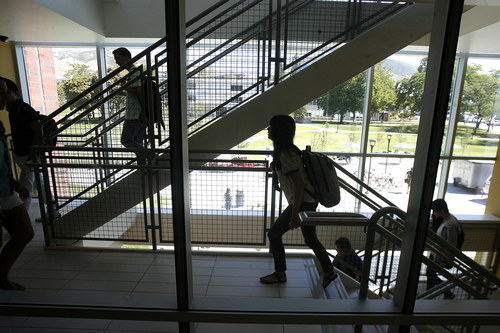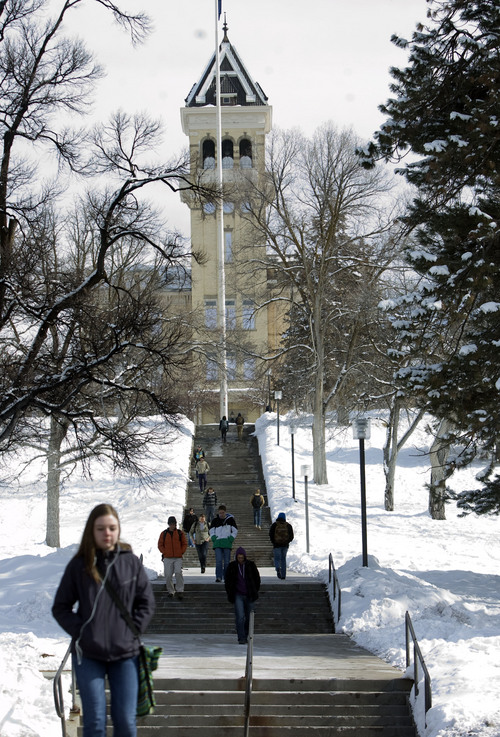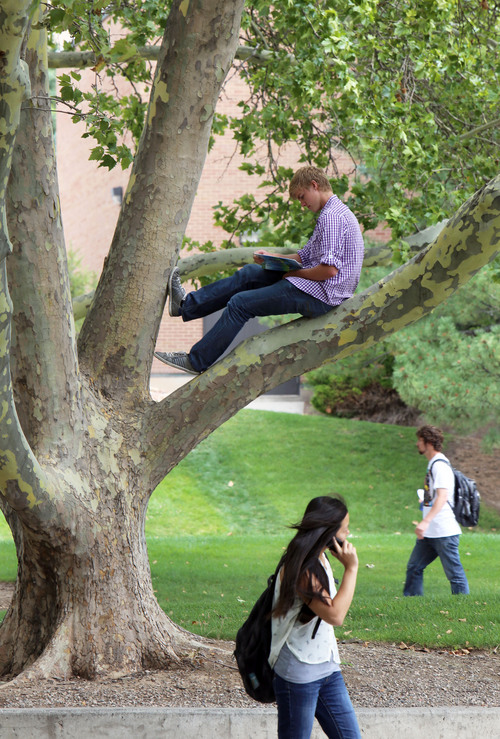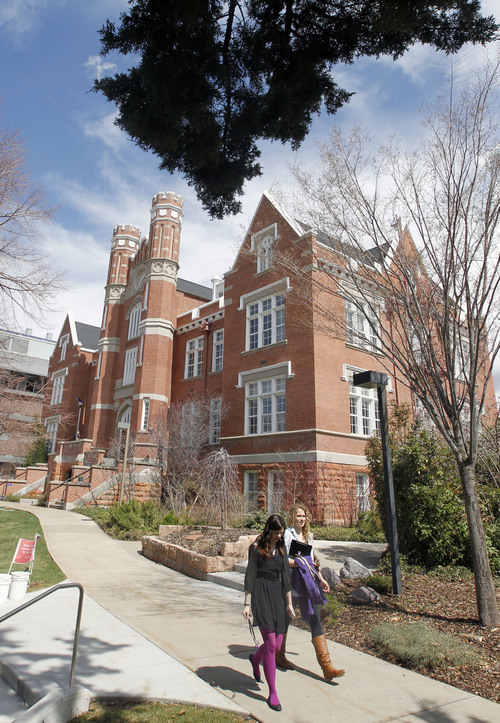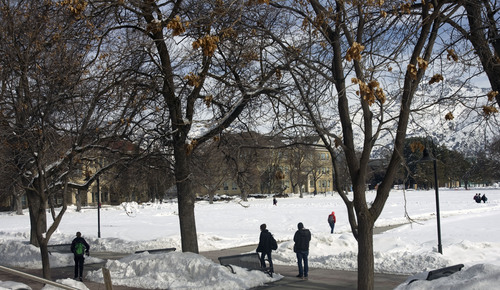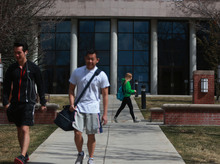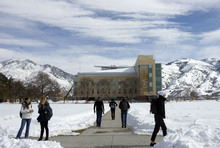This is an archived article that was published on sltrib.com in 2013, and information in the article may be outdated. It is provided only for personal research purposes and may not be reprinted.
For 30 years, U.S. News & World Report has been declaring which colleges and universities are the country's best and which don't make the grade.
The rankings — released Tuesday for 2014 — have been controversial nearly as long. But they've become part of the sometimes-overwhelming college search for students making a life-changing choice and parents preparing to help pay tens of thousands of dollars in tuition.
This year, though, the debate over whether and how colleges can be ranked has a new urgency. Last month, President Barack Obama proposed creating a national higher education ranking system based on which colleges provide the best value — and tying those rankings to federal student aid.
The system, set to be designed by 2015 and in use by 2018, would take into account the percentage of students receiving Pell grants, average tuition, scholarships, student-loan debt and outcomes such as transfers and graduation.
U.S. Education Secretary Arne Duncan said last week his department plans to have staffers travel the country taking input before they craft such a system.
"We don't have any metrics yet. What the president has said is, 'We want to think through very carefully a meaningful rating system,' " he said, ensuring, for example, that colleges are not just enrolling disadvantaged students but also seeing them through to graduation.
"We're in no hurry here, and we'd love thoughtful opinions and advice from anyone who is interested," Duncan said in a telephone news conference hosted by the Education Writers Association.
—
'Blunt instrument' • The concept is potentially problematic for high school guidance counselor Bruce Hunter, who advises students at the private Salt Lake City college-prep school Rowland Hall.
"If these rankings from the federal government are going to have dollar signs on them," Hunter said, " … then I think they stand a chance of being counterproductive."
Rankings generally are a "very blunt instrument," he said.
"The biggest problem is to suggest to students that only a very limited number of quality university experiences are out there," he said. "The effect too often is that students and parents think places that are really wealthy or famous are the only colleges worth considering."
He encourages students to consider how they learn best, what kind of role they want to play in a school and the community, and what their values are.
And he points to other evaluations. Hunter likes the National Survey of Student Engagement, which asks college students to gauge how well they are learning — and eschews rankings — and Colleges That Change Lives, which aims to be a student-centered college search process.
The magazine Washington Monthly has been rating schools based on "public good" measures, such as recruiting and graduating low-income students, service and research. For 2013, it also ranked colleges deemed to be "Best for the buck," examining how well schools help nonwealthy students earn affordable, marketable degrees.
Among national schools, Utah State University finished at No. 13, with the University of Utah at No. 24.
Some Utah schools have expressed confidence in the president's proposal, saying the state's relatively low tuition could mean it also does well in the federal rankings he envisions.
—
Utah's rank • In the new rankings released Tuesday, U.S. News listed the U. as No. 121 among national schools, with USU at 190. LDS Church-owned Brigham Young University placed at 62.
Among regional schools: Westminster College ranked at 22; Southern Utah University, 71; Weber State University, 80.
Both BYU and the U. were ranked among the best schools for undergraduate business and engineering degrees. More ranking lists, including schools with the lowest debt loads at graduation, are available beginning Tuesday at usnews.com.
In order to vault in the rankings, schools often focus on increasing their admissions selectivity, alumni-giving rates and the size of their endowments, rather than the quality of students' on-campus experience, Hunter said.
But in a conference call with media Monday, director of data research Robert Morse said U.S. News changed some aspects of its methodology for the 2014 rankings.
There is a greater emphasis, he said, on outcomes — such as retention and graduation rates — and a diminished emphasis on the test scores and class standing of incoming high school students.
While the schools included in the top tiers did not change, some schools below that level moved up or down significantly, he said. The changes were adopted before Obama's push to focus on outcomes, he noted.
Obama proposes to include data not currently published, such as employment and earnings of graduates, Morse said, adding that the U.S. News methodology will continue to evolve. —
Ranking higher education
U.S. News & World Report released its 2014 rankings for colleges and universities Tuesday.
National schools
Brigham Young University, one of six schools at 62.
University of Utah, one of seven schools at 121.
Utah State University, one of eleven schools at 190.
Western regional schools
Westminster College, one of two schools at 22.
Southern Utah University, one of four schools at 71.
Weber State University, one of seven schools at 80.
See rankings for more Utah schools and on more topics at usnews.com.





